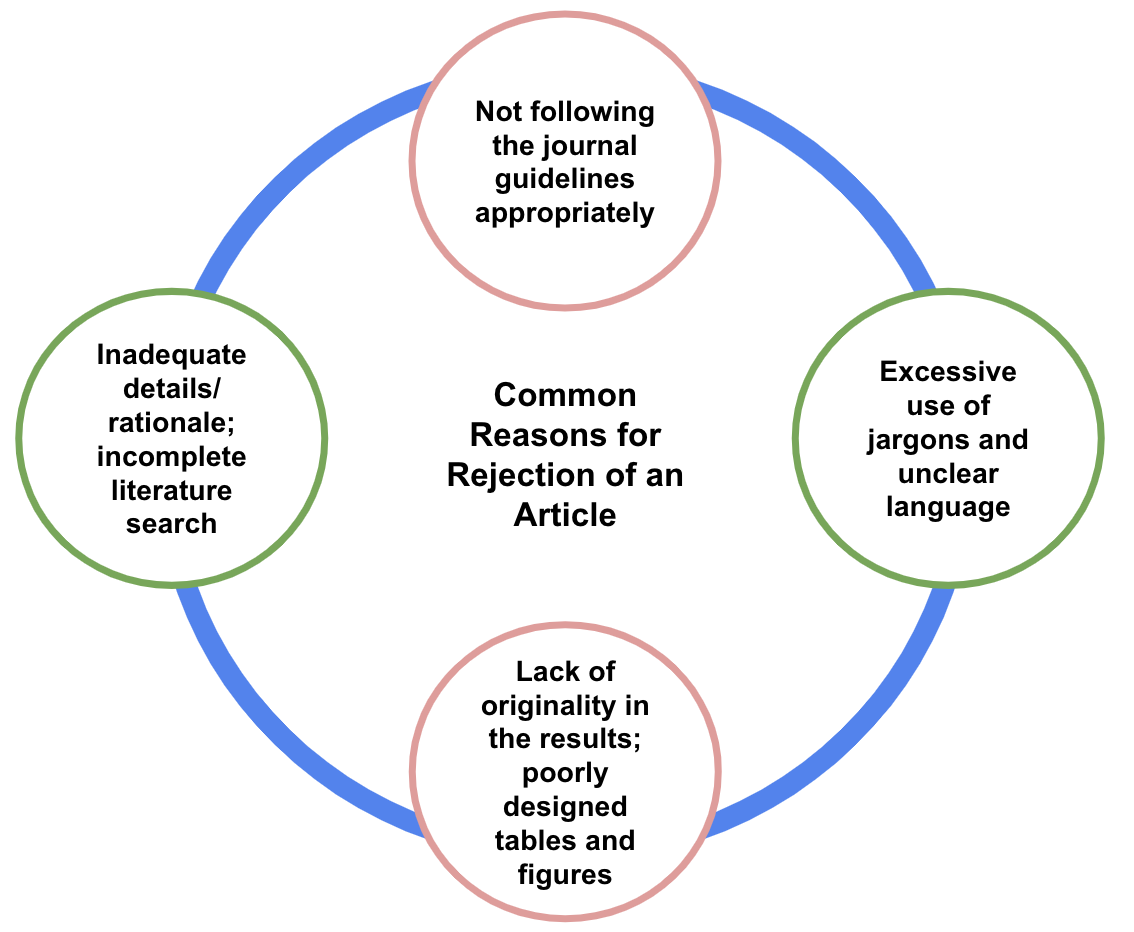Registered Address
Chandigarh-160035, India
Work Hours
Monday to Friday: 9AM - 6:30PM


Nothing is more disheartening than your manuscript being rejected in the journal of your first choice. But, that happens more than often. Some journals boast of rejection rates as high as 90%. Well, how do journals decide on rejecting a manuscript is another story.
What happens when your manuscript gets rejected?
Let’s take some case scenarios:
Case 1:
Rejection Based on Editorial Decision- This one is quicker and often comes with the same reply wrapped in different words. “Unfortunately, your article does not meet the scope of our journal.” or “We are getting more submissions than ever and we regret to inform that your article is not in our priority list”. Well, for you that is the only priority right now. Imagine, a drug launch next month and your key article is rejected. Devastating, Isn’t it?

Handling Case 1:
Always keep a backup journal choice ready. If possible, keep your manuscript formatted as per three different journal guidelines. For more faster results, keep your author profile also ready in your first three journals of choice. This way, you will not lose much time when you face rejection in the previous journal. And, not to forget, some journals will ask for copyright forms/author contributor ship forms at the time of submission and getting them from all the authors becomes difficult in tight timelines. Keep everyone informed and well communicated. Probably, all the authors might not like the idea of filling three forms together.
Case 2:
Rejection Based on Peer-Review- This usually takes 4-5 weeks of time for communication to the author. This kind of rejection usually comes with the comments of the reviewers appended at the end of the mail or as an attachment/link. Most journals send the article for peer-review to at least three reviewers.
Handling Case 2:
This might appear bad at first look but I would suggest this as an opportunity to revise and improve your paper. Nevertheless, I agree that not all the comments given by reviewers are answerable. Some are even beyond the scope of your present paper. If a comment is common among reviewers, it means you should improve upon that. You might need to re-analyze your data, re-write your discussion or re-look at your methodology. When you re-submit your revised manuscript to the next journal, your manuscript actually has lesser flaws than it previously had.
There is even a sub-case to this one. What if you do not agree at all with reviewers and think that it is a biased decision? In that case, you could write for a rebuttal to the editor. Most of the times, the rebuttal is considered, if, of course your concern is genuine. In this case, the editor might send your article for peer-review to a fresh set of reviewers. Or, if you send a rebuttal with address al of comments by previous reviewers, the editor might decide to send it to the same reviewers for a fresh perspective. Even after a rebuttal, the acceptance is not-guaranteed. Again, look for another journal.
Case 3:
Rejection on the Basis of Poor English/Presentation/Grammar/Syntax: Not unexpectedly, many articles are rejected due to poor English and related issues. As a medical writer and editor, I have also come across many articles facing rejection due to poor editing. And, believe me sometimes it is even difficult to make sense of what the author is trying to write.
Handling Case 3:
The best way to tackle this is to take editing support. You could request your colleague/friend or other person who has a good command over English to read your paper and suggest what best can be done. Better, if you have funds, hire a medical writer. A good medical writer/editor can do wonders to your paper. Even journal editors recognize that articles that have medical writer’s support are better to read and follow journal guidelines properly. There is nothing better to read an article where the data is presented in a proper flow and expressed in simple and clear English.
However, don’t forget , in sheer bad luck, even if you avoid every mistake, reviewer might be adamant to see your research as non-publishable. Never lose heart, be persistent. Just for records, there are over 1,00,000 journals.
Written by:
Dr. Shivali Arora